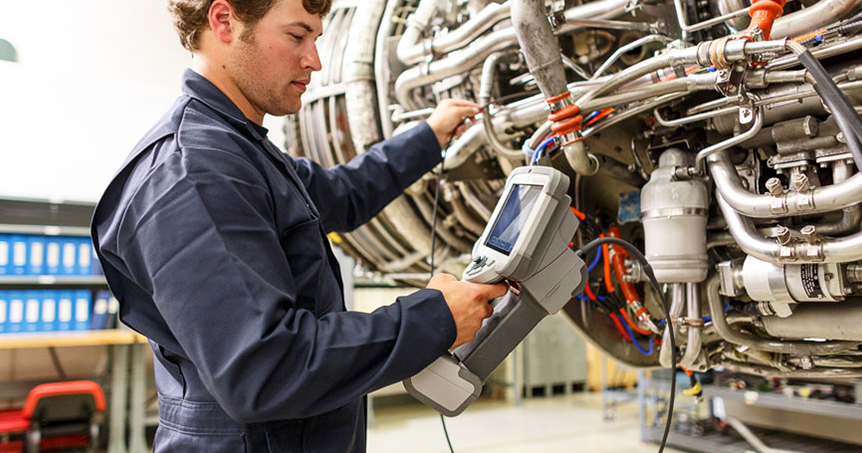
Ultrasonic Inspection facilities at BIS Group, Coimbatore, India
BIS GROUP accepts all challenges in ultrasonic inspection of components using conventional and advanced ultrasonic technique. In most common UT applications, very short ultrasonic pulse-waves with center frequencies ranging from 0.1-15 MHz, and occasionally up to 50 MHz, are transmitted into materials to detect internal flaws or to characterize materials. Ultrasonic testing is often performed on steel and other metals and alloys, though it can also be used on concrete, wood and composites, albeit with less resolution. It is used in many industries including steel and aluminium construction, metallurgy, manufacturing, aerospace, automotive and other transportation sectors.
Magnetic particle Inspections
Magnetic particle inspection facilities at BIS Group, Coimbatore, India
BIS GROUP accepts all challenges in Magnetic Particle inspection of components. MPI is used for detecting surface and shallow subsurface discontinuities in ferromagnetic materials such as iron, nickel, cobalt, and some of their alloys. The process puts a magnetic field into the part. The piece can be magnetized by direct or indirect magnetization. Direct magnetization occurs when the electric current is passed through the test object and a magnetic field is formed in the material. Indirect magnetization occurs when no electric current is passed through the test object, but a magnetic field is applied from an outside source. The magnetic lines of force are perpendicular to the direction of the electric current, which may be either alternating current (AC) or some form of direct current(DC) (rectified AC).
Liquid dye Penetrant Inspections
Liquid dye Penetrant inspection facilities at BIS Group, Coimbatore, India
BIS GROUP accepts all challenges in Liquid penetrant inspection of components. Liquid penetrant examination is one of the most popular Nondestructive Examination (NDE) methods in the industry. It is economical, versatile, and requires minimal training when compared to other NDE methods. Liquid penetrant exams check for material flaws open to the surface by flowing very thin liquid into the flaw and then drawing the liquid out with a chalk-like developer. Welds are the most common item inspected, but plate, bars, pipes, castings, and forgings are also commonly inspected using liquid penetrant examination.
Radiographic Testing (RT)
Radiography testing facilities at BIS Group, Coimbatore, India
BIS GROUP accepts all challenges in Radiographic inspection of components. radiography is a method of non-destructive testing where many types of manufactured components can be examined to verify the internal structure and integrity of the specimen. Industrial Radiography can be performed utilizing either X-rays or gamma rays. Both are forms of electromagnetic radiation. The difference between various forms of electromagnetic energy is related to the wavelength. X and gamma rays have the shortest wavelength and this property leads to the ability to penetrate, travel through, and exit various materials such as carbon steel and other metals.
Gamma radiation sources, most commonly iridium-192 and cobalt-60, are used to inspect a variety of materials. The vast majority of radiography concerns the testing and grading of welds on pressurized piping, pressure vessels, high-capacity storage containers, pipelines, and some structural welds. Other tested materials include concrete (locating rebar or conduit), welder’s test coupons, machined parts, plate metal, or pipewall (locating anomalies due to corrosion or mechanical damage). Non-metal components such as ceramics used in the aerospace industries are also regularly tested. Theoretically, industrial radiographers could radiograph any solid, flat material (walls, ceilings, floors, square or rectangular containers) or any hollow cylindrical or spherical object.
Visual testing (VT)
Visual Testing (VT) facilities at BIS Group, Coimbatore, India
BIS GROUP accepts all challenges in Liquid penetrant inspection of components .Visual testing (VT) is the oldest and most common nondestructive testing (NDT) techniques. It is typically the first step in the examination process to inspect a variety of product forms including castings, forgings, machined components and weld elements,.
Compared to other techniques, visual testing is low in cost and easy to apply, and often eliminates the need for further types of testing. Some of the industries that use VT include structural steel, automotive, petrochemical, power generation, and aerospace.
